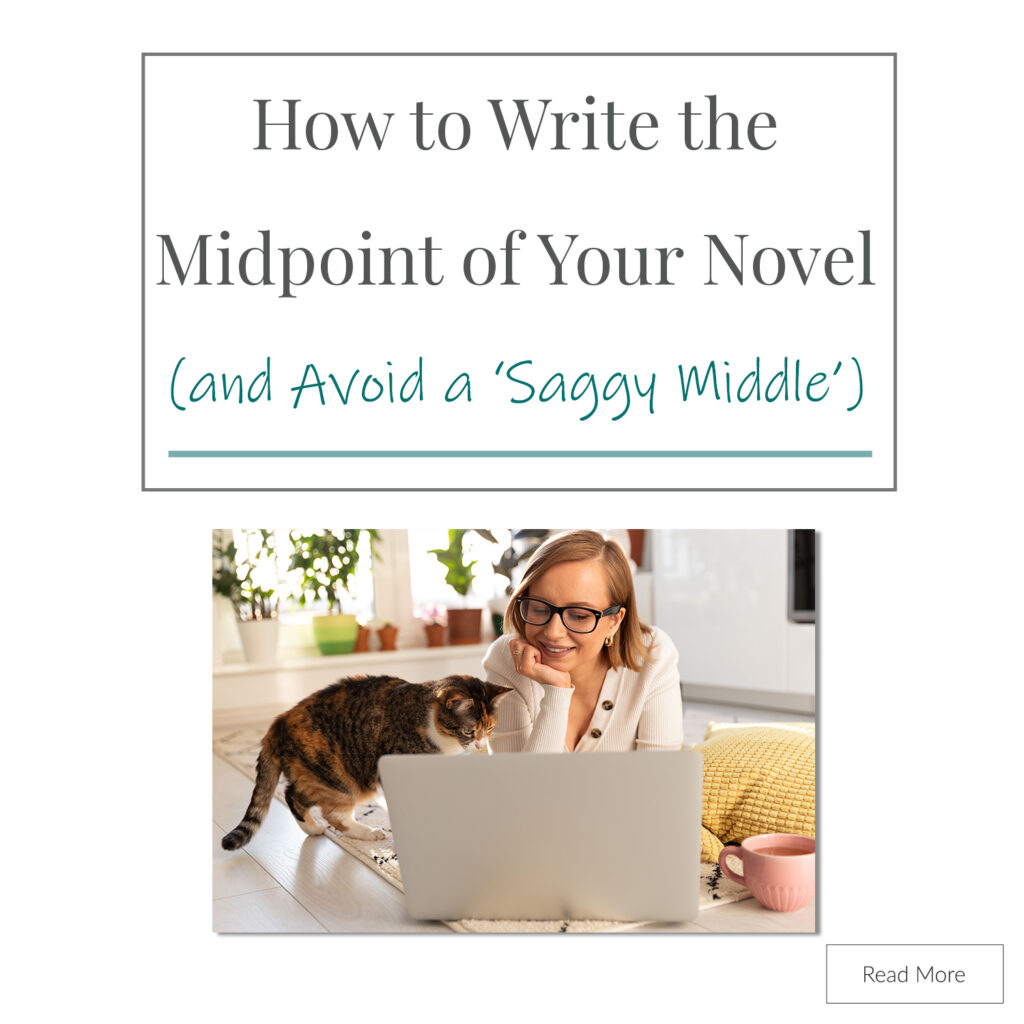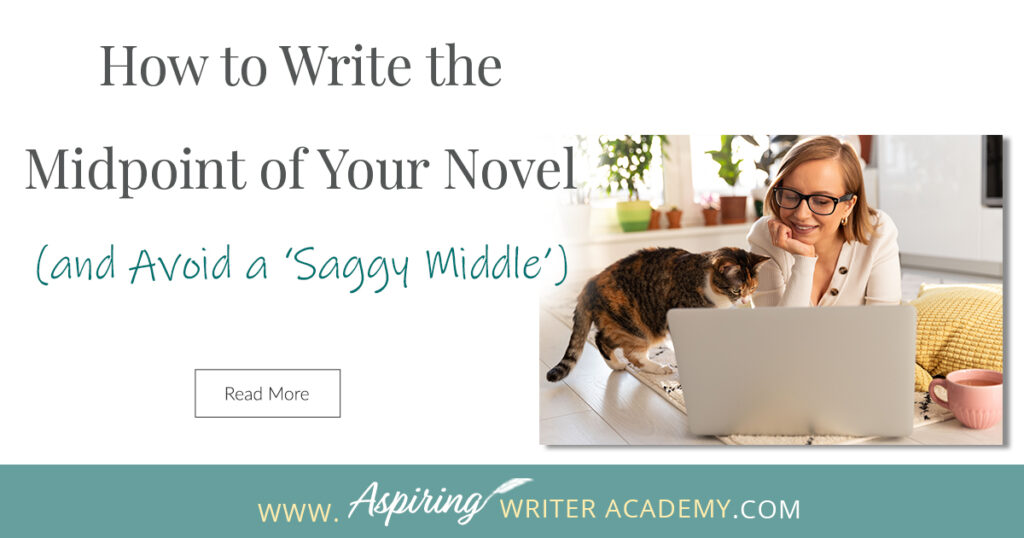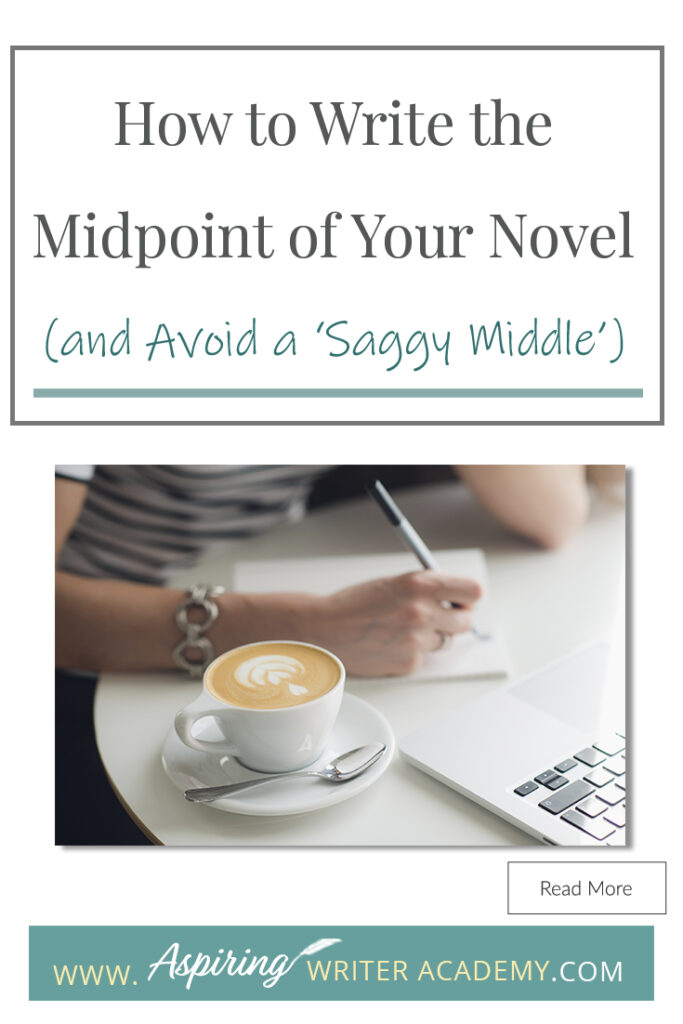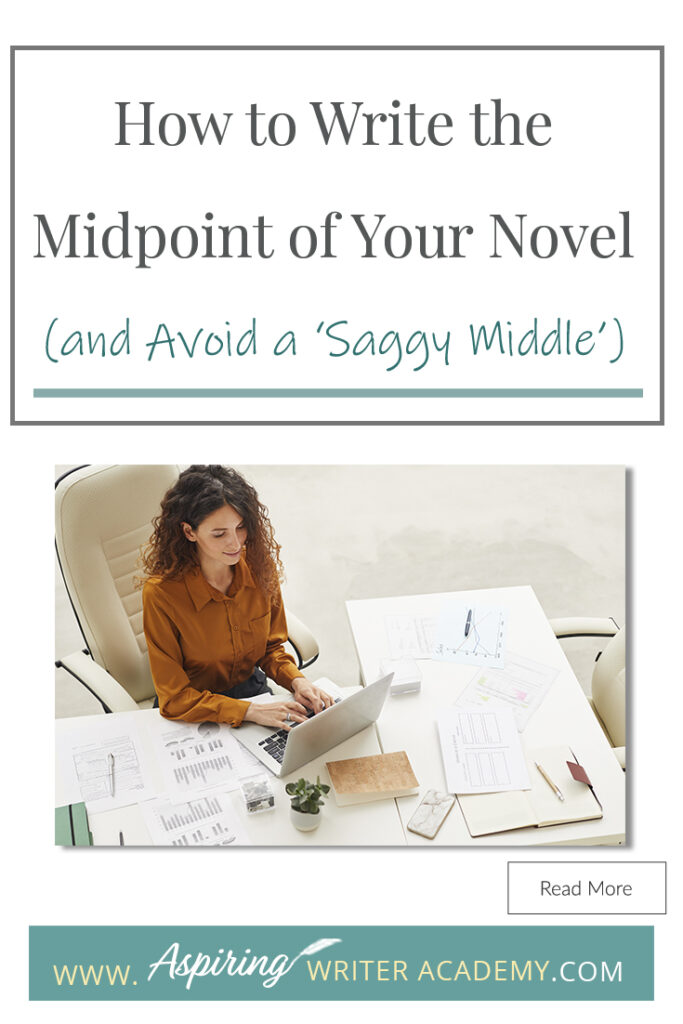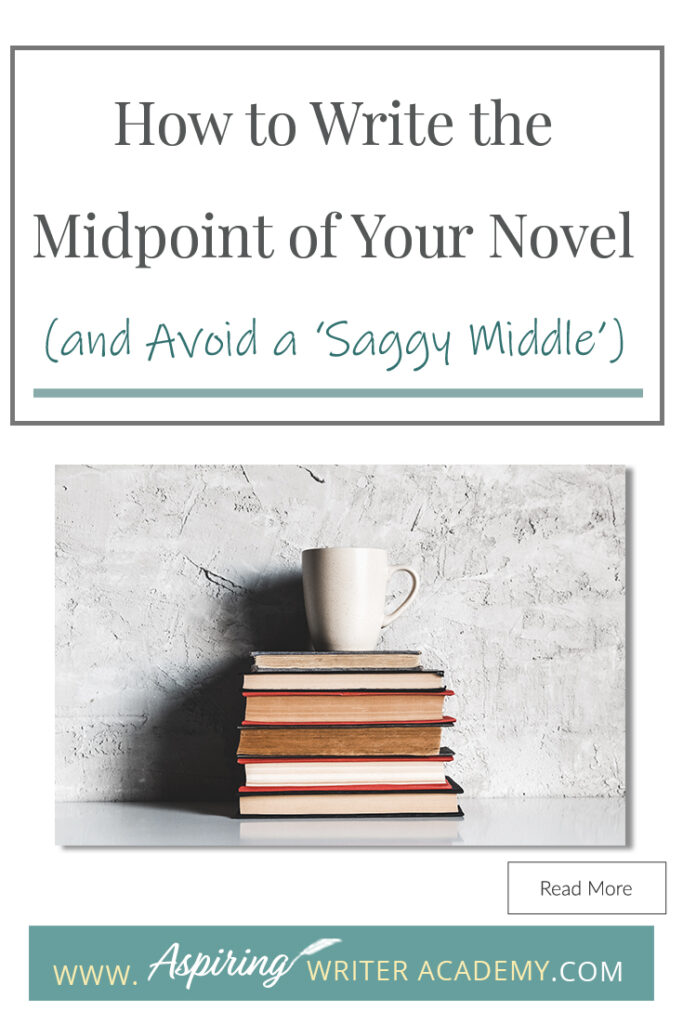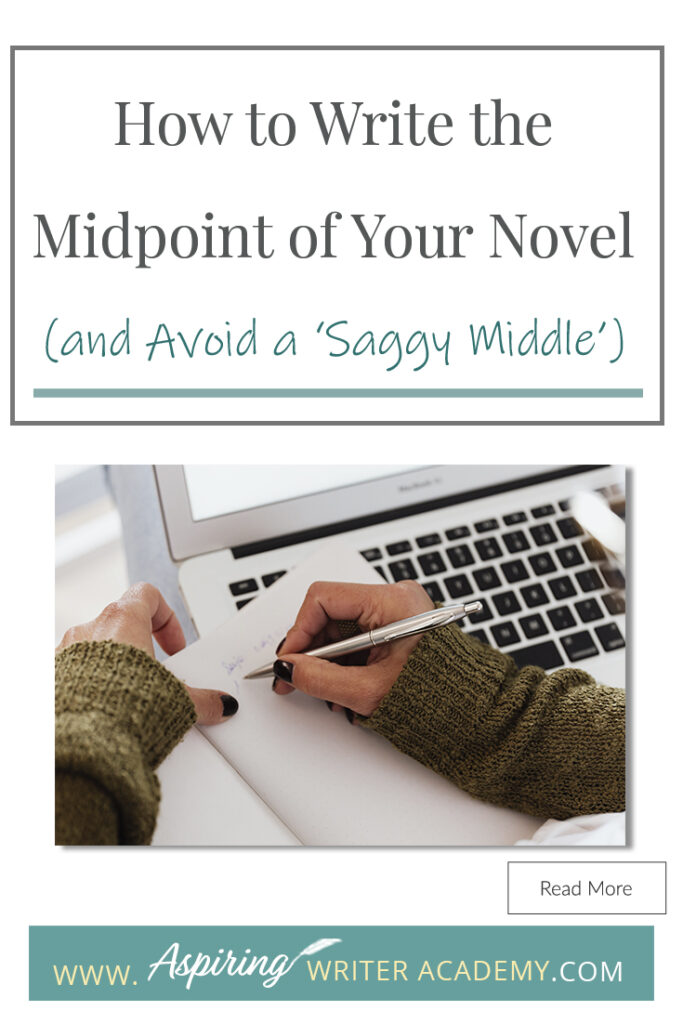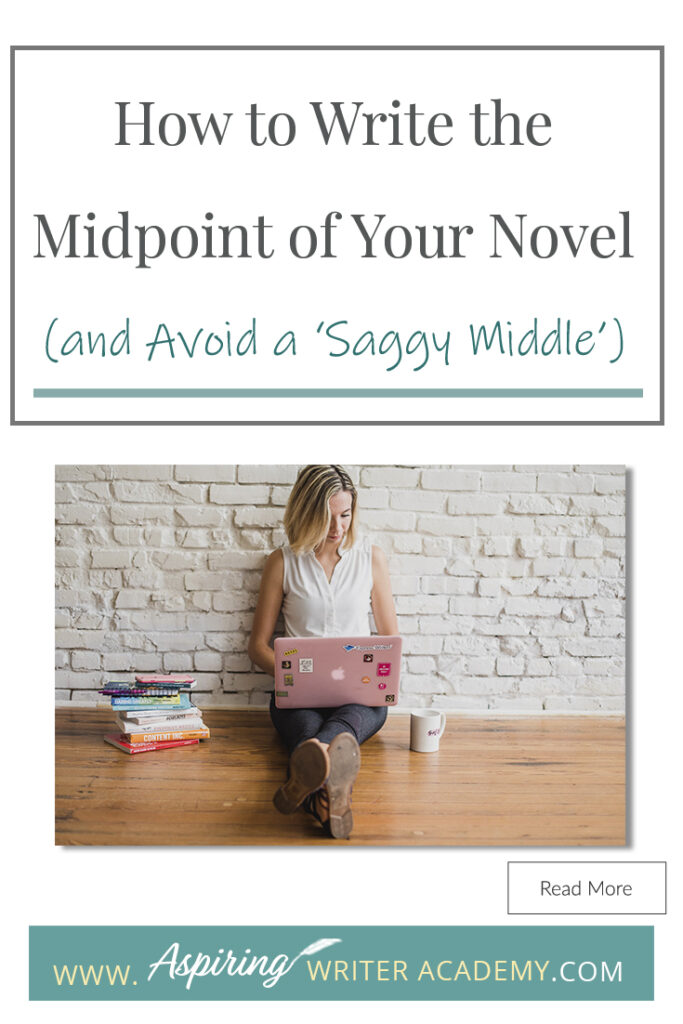How to Write the Midpoint of Your Novel (and Avoid a ‘Saggy Middle’)
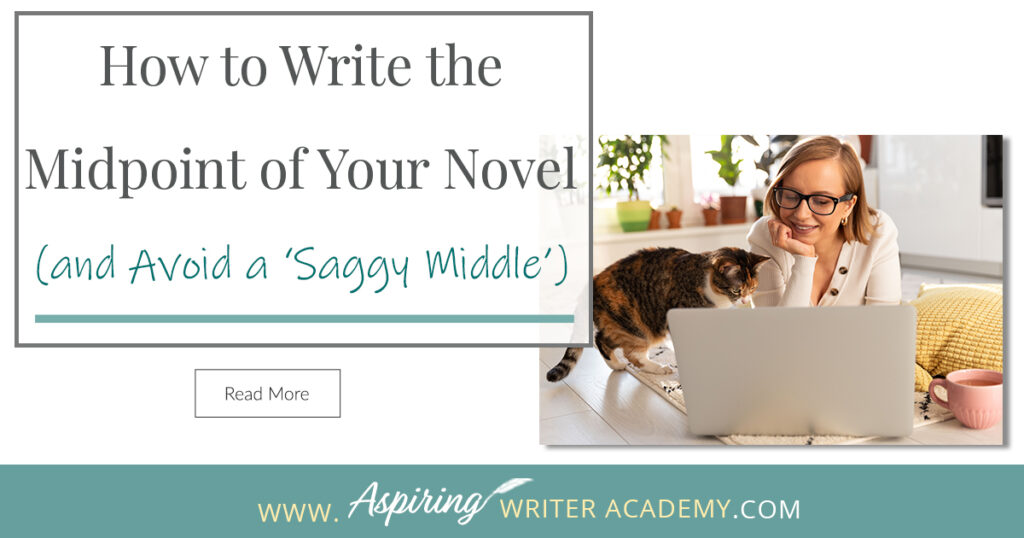
Do your novels begin full steam with a lot of energy and momentum only to fizzle out by the book’s middle? If repeated, you may soon have a whole drawer of brilliant starts but no finished projects. So how do you avoid writing a ‘saggy middle?’
In our post, How to Write the Midpoint of Your Novel (and Avoid a ‘Saggy Middle’), we give you a template to slingshot your story over that dreaded hump and straight into the second half so you can keep writing and finally get to ‘The End!’
Follow along as we discuss How to Write the Midpoint of Your Novel in 3 Easy Steps:
- How to Add a Midpoint Mini-Sequence
- The Temporary Triumph & Midpoint Reversal
- A “Man in the Mirror” Moment
1) How to Add a Midpoint Mini-Sequence
Most stories flounder at midpoint simply because the author does not have anything happening. At least not anything that matters. The key is to stay focused.
One way to spice up the midpoint of your novel and slingshot the story from the first part of ACT II into the second half of ACT II is to add a mini sequence.
- Create an event, or a mini story within the story, with a clear beginning, middle, and end that can take place in the middle of ACT II of your novel.
- The mini sequence can take up one full chapter or three, depending on its importance. Examples of an event could be a wedding, a rodeo, a courtroom appearance, or a detour or diversion on a quest, etc. This event should be something the characters have been looking forward to (or dreading) since the beginning of ACT II. This helps build tension and reader anticipation.
- Make sure that the event arises naturally from the main plot and moves the story forward, reveals more about your characters, and helps turn the story in a different direction.
- The event or mini story sequence changes the character and the story at the Midpoint so that while the main character may have been more reactive in the first half of the story, now that character will be more proactive going into the second half of ACT II.
Example:
In my first novel, Bet You’ll Marry Me, a sweet contemporary cowboy romance, I have several of the characters in the story going on a weekend pack trip at the midpoint. This mini sequence takes the characters away from the main setting back on the ranch for a little while and tests their relationships, motivations, and skills.
The mini sequence event has a clear beginning as the characters gather supplies, saddle the horses, and prepare for the pack trip. They start their journey up the mountain to a fire tower.
At the middle of the mini sequence, the Midpoint of the novel, the characters reach their destination at the fire tower and make camp. The conversations between characters on the ride up to the fire tower created tension that hits a pivotal moment here at the midpoint when the romantic couple kiss and realize they have feelings for one another. Feelings they had fought against until now. After this, things will be different. The story will change in a different direction going forward.
The ending of the pack trip mini sequence shows how the romantic couple’s relationship has changed as they come down the mountain and the reactions of the other characters as they respond to the main couple’s change. This event also changes the other characters and the story as the characters return to the ranch. The pack trip also slingshots the story smoothly from Act II part 1 and over the midpoint into Act II part 2.
In fiction writing, what is a ‘saggy middle’?
A ‘saggy middle’ is a term used to indicate that your story has run out of energy and is being dragged down into the realm of boredom. In other words, a saggy middle is a place in your story where nothing much is happening.
2) The Temporary Triumph & Midpoint Reversal
Another way to escalate the tension and get your story over the Midpoint is to use two very important components of traditional story structure: the one-two punch of the Temporary Triumph and the Midpoint Reversal.
(This one-two punch of the Temporary Triumph and Midpoint Reversal can also be used in combination with the ‘event’ or ‘mini story sequence’ discussed above.)
Act II part 1 tests your characters and teaches them the skills they will need in the second half of the novel. Your characters are learning, growing, and failing again and again as they try to achieve their over-arching story goals.
Then, right before the midpoint of the story, let the characters finally experience a “win.” Something finally goes right. They achieve a mini victory that leads your protagonist to believe he or she will soon overcome the opposition and succeed in the quest or mission. The characters may celebrate.
This is a ‘Temporary Triumph’ because the moment will be short-lived. In the very next scene, the protagonist will be hit with something unexpected that will change everything. This is the Midpoint Reversal, the second major turning point, or disaster, or game-changing moment in the story. Usually, this reversal is brought on by the antagonist or villain in the story.
Just when the protagonist thought he or she would overcome the opposition, the opposition does something even worse than before to throw the main character off course. The protagonist realizes that the temporary triumph was not a real triumph. The protagonist could have been fed false information or perhaps she had drawn the wrong conclusion about a situation or another character. Many times, at the Midpoint Reversal secrets are revealed.
Example: At the Temporary Triumph, the heroine may be thrilled when the hero asks her out on a date, only to find out in the next scene (Midpoint Reversal) that he may be wanted for murder!
Or if your characters are on a quest for treasure and celebrate at the Temporary Triumph thinking they have found gold, in the next scene at the Midpoint Reversal, they may discover it was only fake Fool’s Gold.
Sometimes the protagonist gains insight at the Midpoint Reversal that he or she did not have before. Perhaps your protagonist may learn that someone they trusted has lied. They have been conned or led astray.
Sometimes it is at the Midpoint Reversal that a mentor dies, (killed by the antagonist) and the protagonist now has to go into the second half of the novel on his own.
And sometimes, the protagonist and antagonist, who have been fighting against one another the whole first half of the story, now find there is an even bigger foe threatening them and they must set aside their differences and team up to fight this new enemy together for the second half of the story.
After they defeat this new bigger threat, they will need to still work out their own differences at the novel’s end. But perhaps working together will teach them a few things before then so that a compromise or satisfying resolution can be reached later.
3) A “Man in the Mirror” Moment
After the Midpoint Reversal, the protagonist often takes a moment to himself to either look into an actual mirror or reflection of himself, perhaps in a window or body of water, and consider “Who am I?” or “What kind of person am I?” or “What have I done?”
The devastating blow at the Midpoint Reversal causes the protagonist to reflect on all that has happened in the first half of the story and what he will do going forward. The Midpoint Reversal may have changed his perceptions or beliefs. He may change his tactics for pursuing his goal. This is the midpoint in the internal or personal storyline, the middle of the character arc.
First is the blow to the external plot storyline thread, which then causes the blow to the internal personal character arc storyline thread.
If the protagonist has a bad habit or flaw or warped way of thinking, this is where the character may realize that it is this flaw that has caused him to fail in the past. To succeed, he or she must change. Your character will start to do things differently in the second part of ACT II.
There can be a parting of the curtains here where the character now understands what is going on in a way he hadn’t before. Secrets revealed may change how he looks at things or other people. This in turn, may change his actions going forward or his game plan.
Example: In the 2009 movie, Avatar, by James Cameron (which has more recent sequels in the works) the main character / protagonist is Jake Sully, who has been sent to the planet of Pandora to interact with the native Na’vi people. His mind is linked to an avatar body resembling the Na’vi so he will be accepted. His mission is to find the natives weaknesses, a bargaining chip that the human military can use to convince the Na’vi people to move off a rich minefield of precious resources.
The only problem is that Jake falls in love with the chief’s daughter, and the Na’vi people (Temporary Triumph) and when they find out at the Midpoint Reversal that Jake is actually working for the enemy, they banish him. Worse, the military uses the information Jake gave them to destroy the natives home base and the chief dies. The military is also against Jake for trying to betray them and help the Na’vi people.
After the big terrible Midpoint Reversal where the natives home base is destroyed, Jake finds himself utterly alone, alienated by both sides, and realizes what has led up to this moment and what he must now do. He realizes where his loyalty truly lies and who he must become to try to save the Na’vi people and make things right.
Sometimes the character can actually look in a mirror or in a reflection and actually ‘see’ himself as he is contemplating, but sometimes he can just see inside himself.
The ‘Man in the Mirror’ moment is a pause for reflection which will change the course of the story.
We hope you have enjoyed How to Write the Midpoint of Your Novel (and Avoid a ‘Saggy Middle’), and that you have gained some valuable tips to end your frustration with midpoints and ‘saggy middles’ and help you write a book to ‘The End.’
If you have any questions or would like to leave a comment below, we would love to hear from you!
If you like more help developing your story, you may wish to download our Free Brainstorming Your Story Idea Worksheet
Do you find it difficult to create compelling antagonists and villains for your stories? Do your villains feel cartoonish and unbelievable? Do they lack motivation or a specific game plan? Discover the secrets to crafting villains that will stick with your readers long after they finish your story, with our How to Create Antagonists & Villains Workbook.
This 32-page instructional workbook is packed with valuable fill-in-the-blank templates and practical advice to help you create memorable and effective antagonists and villains. Whether you're a seasoned writer or just starting out, this workbook will take your writing to the next level.
Our Goal for Aspiring Writer Academy is to help people learn how to write quality fiction, teach them to publish and promote their work, and to give them the necessary tools to pursue a writing career.

ENTER YOUR EMAIL BELOW
TO GET YOUR FREE
"Brainstorming Your Story Idea Worksheet"
7 easy fill-in-the-blank pages,
+ 2 bonus pages filled with additional story examples.
A valuable tool to develop story plots again and again.
Other Blog Posts You May Like
20 Items to Bring to Your First Writer’s Conference
How to Find a Great Story Idea in 4 Easy Steps
How to Write a Novel While Working Full Time
Slingshot Week: How to Set New Goals for Writing in 2023
The Pros and Cons of Writing Holiday Fiction (Collections & Anthologies)
Fiction Writing: How to Find a Critique Partner/Group
How to Research Information for a Historical Novel
7 Steps to Begin Writing a New Fictional Story
Fiction Writing: 5 Key Differences Between a Novel and a Novella
Fiction Writing: Office Supplies to Help You Prepare to Write Your Next Novel
3 Levels of Goal Setting for Fiction Writers

is a multi-published author, speaker, and writing coach. She writes sweet contemporary, inspirational, and historical romance and loves teaching aspiring writers how to write quality fiction. Read her inspiring story of how she published her first book and launched a successful writing career.

